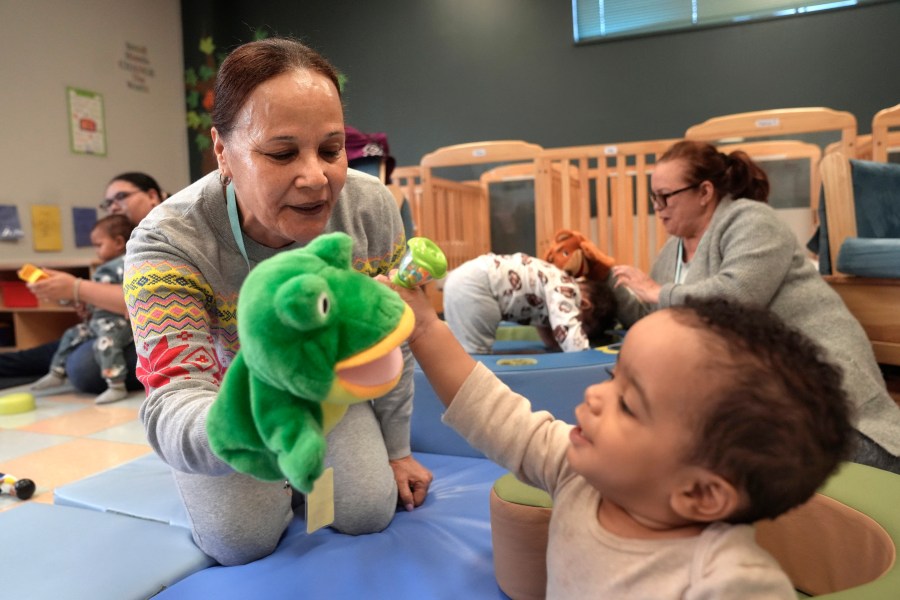COLUMBUS, Ohio (WCMH) — Ohioans have limited access to affordable childcare, and experts say it’s costing the state billions.
“It’s just as important for them as food and housing and all of the other supports that they need,” Gina Ginn, CEO of Columbus Early Learning Centers, said. “Childcare is really a part of what they need if both parents are going to work.”
A 2025 report from the U.S. Chamber of Commerce Foundation found childcare issues cost Ohio an estimated $5.48 billion annually in costs to employers and loss of state tax revenue. Ginn said central Ohio does not view childcare as a necessary part of boosting employment and the economy. She said just like roads and transportation are necessary for workers, childcare is crucial for parents’ ability to be employed.
According to the Chamber of Commerce report, gaps in childcare affect employment, household stress and the state’s economy. Groundwork Ohio, which also contributed to the report, said childcare can cost between $10,000 and $13,000 annually for just one child.
“If those couples had that money back, I mean, the idea that they could potentially buy a home or have the money that they needed for other areas of their life as a family — it would, it would impact the economy in other ways,” Ginn said. “They would have more money to spend.”
Ginn said of Ohio’s major metro areas, Columbus and Franklin County have the least support for affordable childcare. She said families on the “benefits cliff” are hit especially hard, referring to households that make too much to qualify for federal childcare programs, but do not make enough to afford private childcare. See previous coverage in the video player above.
Franklin County does offer the RISE program, which provides scholarships to families and teachers to help increase access to childcare. However, RISE is supported by short-term COVID-19 assistance funding. RISE is expected to sunset in November 2026 once funding expires.
RISE is administered by Future Ready Five, a central Ohio program working to better prepare kids for kindergarten. In September, experts spoke with the city of Columbus about the need to boost learning access and outcomes between ages 0-5. Future Ready Five CEO Mario Basora said 60% of central Ohio children are unprepared when they start kindergarten.
“And then when their scores come out in third grade and fourth grade, we blame the school districts because the scores aren’t quite what we need them to be,” Basora said.
Basora said 90% of a child’s brain is developed by age 5, so improving test scores and student outcomes starts before kids go to school. Future Ready Five collaborates with childcare centers, teachers and parents to improve early literacy. However, kids can’t benefit from the program if they cannot afford to attend the centers in the first place.
Federal and state changes compound childcare access issues in central Ohio. Starting this month, parents must work at least 33 hours per week to qualify for full-time Publicly Funded Child Care benefits. Ginn said the change, which effects reimbursement rates, would be “very damaging to a lot of childcare programs.” The change is also expected to hit families hard.
“I don’t even know that we know what is possible if people had access to the care that they really, truly need for their child,” Ginn said.
In September, Gov. Mike DeWine announced a $10 million Child Care Cred affordability program. Families whose incomes are between 200%-400% of the federal poverty level are eligible. If approved, families share childcare costs with their employers and the state. Employees and employers cover 40% each, and the state will cover the remaining 20% through June 2026.
The state is also implementing a voucher program for families to attend childcare services of their choice, similar to the state’s scholarship program for students to attend nonpublic schools. Ginn recommended a similar system as a possible solution. First, she said there needs to be a culture shift.
“It really would have to be first valued in our community and in our state as something that is a part of what it takes for people to be in the workforce and to be productive in the workforce is that they have to have reliable, high quality care for their children,” Ginn said.










